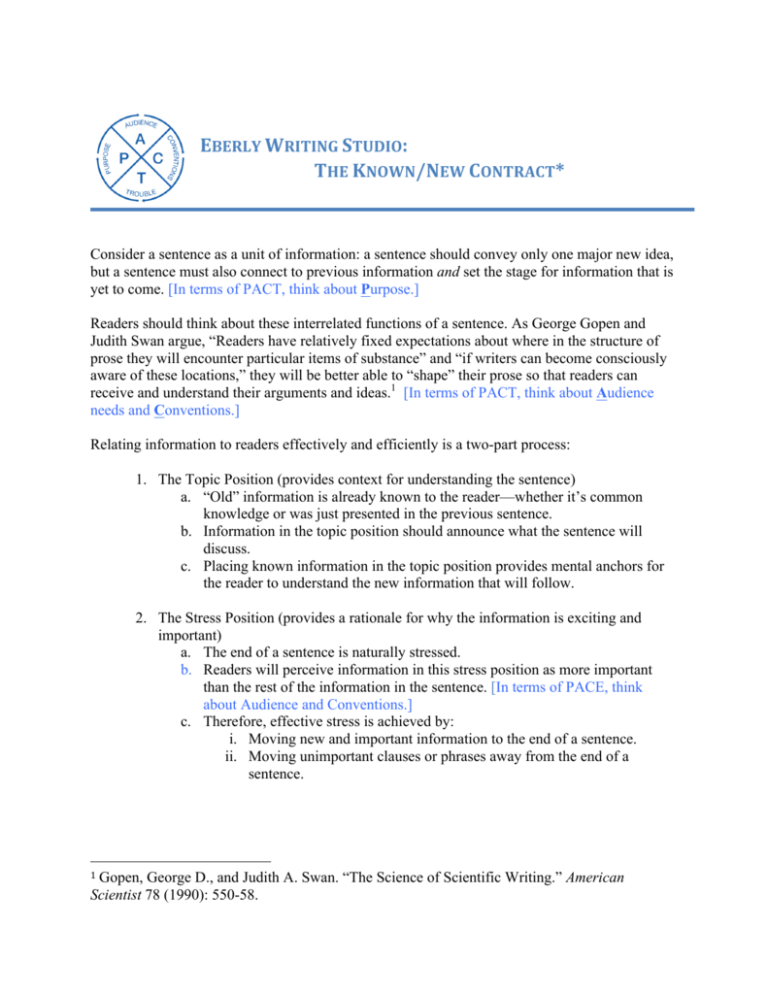the known/new contract
advertisement

EBERLY WRITING STUDIO: THE KNOWN/NEW CONTRACT* Consider a sentence as a unit of information: a sentence should convey only one major new idea, but a sentence must also connect to previous information and set the stage for information that is yet to come. [In terms of PACT, think about Purpose.] Readers should think about these interrelated functions of a sentence. As George Gopen and Judith Swan argue, “Readers have relatively fixed expectations about where in the structure of prose they will encounter particular items of substance” and “if writers can become consciously aware of these locations,” they will be better able to “shape” their prose so that readers can receive and understand their arguments and ideas.1 [In terms of PACT, think about Audience needs and Conventions.] Relating information to readers effectively and efficiently is a two-part process: 1. The Topic Position (provides context for understanding the sentence) a. “Old” information is already known to the reader—whether it’s common knowledge or was just presented in the previous sentence. b. Information in the topic position should announce what the sentence will discuss. c. Placing known information in the topic position provides mental anchors for the reader to understand the new information that will follow. 2. The Stress Position (provides a rationale for why the information is exciting and important) a. The end of a sentence is naturally stressed. b. Readers will perceive information in this stress position as more important than the rest of the information in the sentence. [In terms of PACE, think about Audience and Conventions.] c. Therefore, effective stress is achieved by: i. Moving new and important information to the end of a sentence. ii. Moving unimportant clauses or phrases away from the end of a sentence. 1 Gopen, George D., and Judith A. Swan. “The Science of Scientific Writing.” American Scientist 78 (1990): 550-58. Known New Example 1: In this example, the writer uses “because” to point back towards the known information before announcing their new contribution. Because predictive codes may drive neural activity in sensory systems, subjective perception, and belief formation, disruptions in predictive coding may underlie the abnormal percepts and false beliefs that define hallucinations and delusions. Example 2: In the following example, the writer signals their known information with “recent findings” and later uses “but” to signal a turn from the known to the new: Recent findings in schizophrenia studies support abnormalities in PE signals for reward that relate to delusion propensity, but mechanistic evidence on how disruptions in predictive coding may produce psychotic symptoms is lacking.







